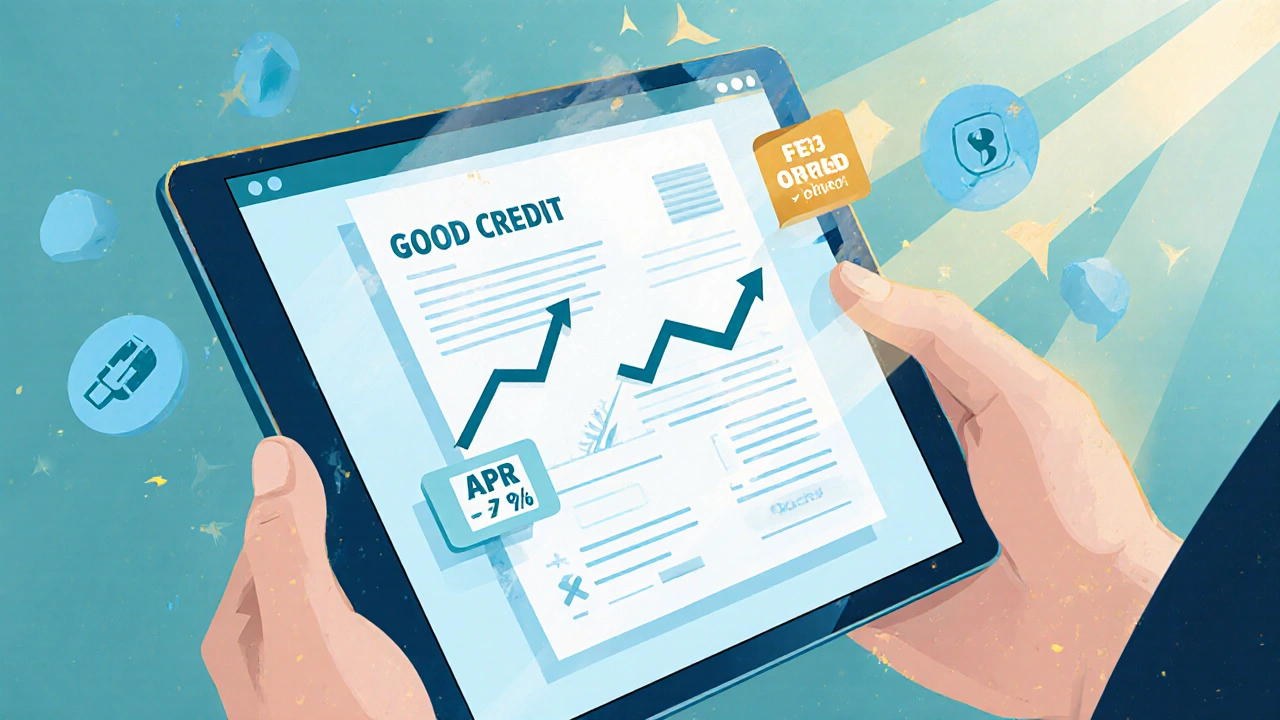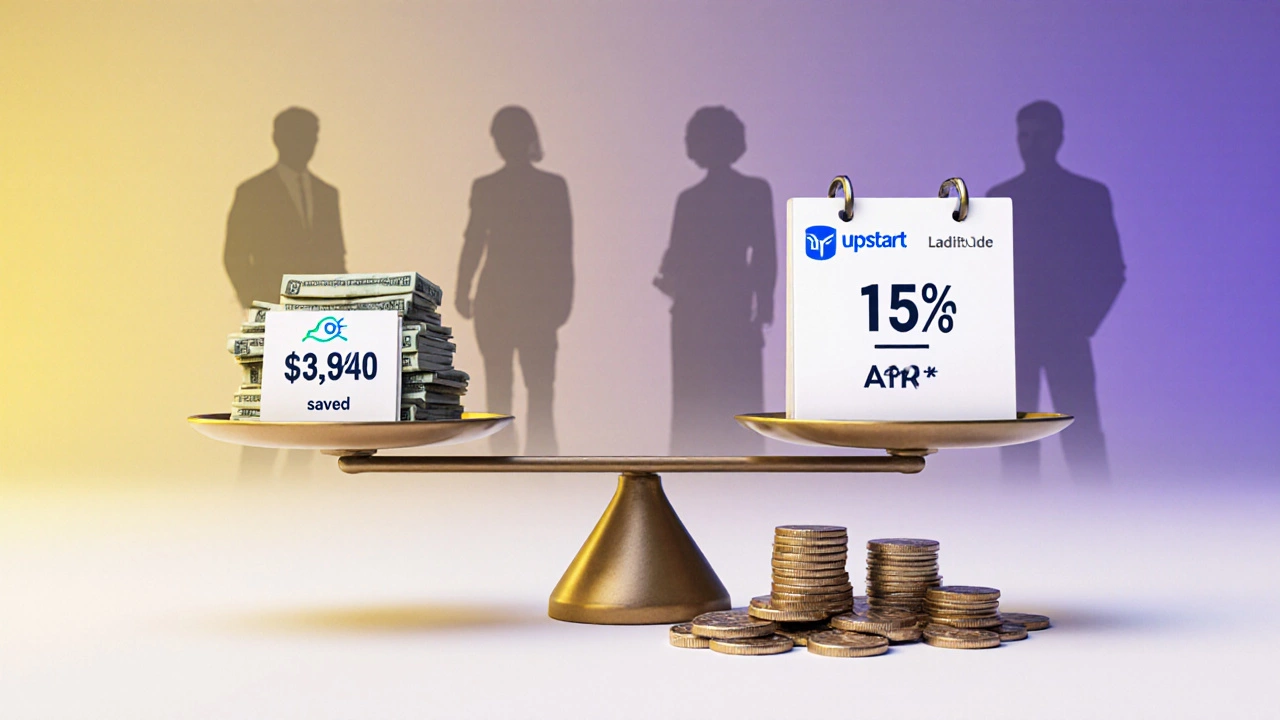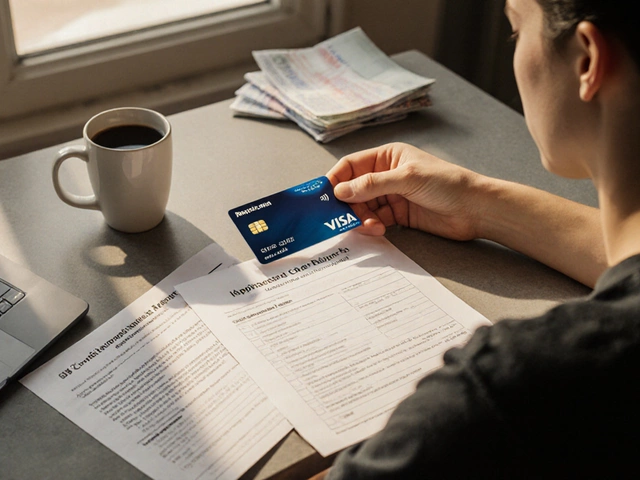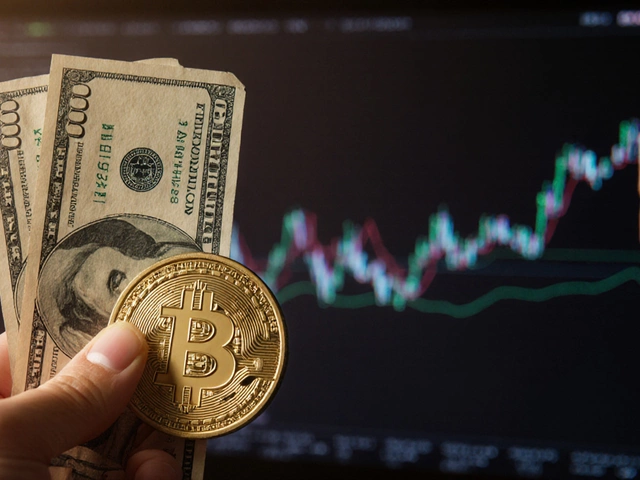
Personal Loan Calculator - See How Much You Can Save
Calculate Your Loan Costs
See how much you'll pay with different APRs. The difference between a 7% and 15% APR can save you thousands.
When you’re looking at personal loans, the APR isn’t just a number on a page-it’s the real cost of borrowing. A good APR can save you hundreds, even thousands, over the life of your loan. But what does ‘good’ actually mean in 2025? It’s not the same as it was five years ago. Rates have shifted, lenders have changed, and your credit score matters more than ever.
What APR Really Means
APR stands for Annual Percentage Rate. It’s not just the interest rate. It includes fees like origination charges, application costs, and sometimes even insurance premiums. That’s why two loans with the same interest rate can have very different APRs. You’re paying for more than just the money you borrow-you’re paying for access to it.
In Australia, lenders are required to show you the APR upfront. That means you can compare apples to apples. But most people still look at the interest rate alone. Don’t make that mistake. A loan with a 9% interest rate and a $200 fee might cost more than a loan with a 9.5% rate and no fees. Always check the APR.
What’s Considered a Good APR Right Now?
As of October 2025, the average personal loan APR in Australia sits between 8.5% and 15%. That’s higher than the lows of 2021-2022, when rates dipped below 6% for top-tier borrowers. But it’s still manageable if you know what to aim for.
A good APR right now is anything under 10%. If you have a credit score above 750, steady income, and low existing debt, you can realistically get rates between 7% and 9%. That’s the sweet spot. It’s not the cheapest you’ve ever seen, but it’s affordable and common.
APRs between 10% and 13% are average. You’ll see these offered to people with scores between 650 and 749. It’s not terrible, but you’re paying more for the risk. Anything above 14%? That’s high. You might be better off exploring other options-like a balance transfer card or negotiating with your bank-before signing on the dotted line.
What Drives Your APR?
Your credit score is the biggest factor. But it’s not the only one. Lenders look at five things before giving you a rate:
- Credit score - Over 750? You’re in the best tier. Below 600? Expect higher rates or rejection.
- Debt-to-income ratio - If you’re spending more than 40% of your income on debt payments, lenders see you as risky.
- Loan term - Longer terms mean lower monthly payments but higher total interest. A 3-year loan usually has a better APR than a 7-year one.
- Loan amount - Borrowing $5,000 might get you a better rate than $20,000, depending on the lender. Smaller loans are less risky for them.
- Secured vs unsecured - Secured loans (backed by collateral) have lower APRs. But most personal loans are unsecured. That’s why your credit score matters so much.
Let’s say you earn $75,000 a year, have no other debt, and a credit score of 780. You apply for a $10,000 personal loan over 4 years. You could easily get an APR of 8.2%. Now, if your score is 620 and you’re already paying $1,200 a month on car and credit card debt? You might be looking at 16% or more.

Where to Find the Best Rates
Don’t just go to your bank. Big banks like Commonwealth Bank, NAB, and ANZ often have higher rates because they have overhead costs. Online lenders and credit unions usually offer better deals.
Compare lenders like Upstart, MoneyMe, Judo Bank, and Latitude. These platforms use alternative data-like your employment history, bank transaction patterns, and education-to judge your risk. That means you might qualify for a lower rate even if your credit score isn’t perfect.
Also, check if your employer offers a payroll-deducted loan. Some Australian companies partner with lenders to give staff lower rates as a benefit. It’s not common, but if you’re eligible, it’s one of the easiest ways to get under 8%.
How Much Can a Good APR Save You?
Let’s say you borrow $15,000 over five years. Here’s what different APRs cost you:
| APR | Monthly Payment | Total Interest Paid |
|---|---|---|
| 7% | $295 | $2,712 |
| 10% | $319 | $4,135 |
| 15% | $361 | $6,652 |
That’s a $3,940 difference between the best and worst rates. That’s like getting a free vacation-or paying off your credit card balance twice. A 1% difference in APR saves you about $350 over five years. It adds up fast.

How to Get the Best APR
Getting a good rate isn’t luck. It’s strategy.
- Check your credit report - Get a free report from Equifax or Illion. Fix errors. Pay down balances. Even small improvements help.
- Don’t apply everywhere - Each application triggers a hard credit check. Too many in a short time hurt your score. Apply to 2-3 lenders max.
- Pre-qualify first - Most lenders let you see your potential rate without affecting your credit. Use this to compare offers before applying.
- Ask for a lower rate - If you’ve been a loyal customer, call your bank. Say you’ve been approved elsewhere for a lower rate. They might match it.
- Consider a co-signer - If your credit isn’t strong, a co-signer with good credit can drop your APR by 3-5%.
When to Avoid a Personal Loan
A personal loan isn’t always the answer. If you’re using it to pay off credit cards and you don’t change your spending habits, you’ll end up with both debts. That’s a trap.
Also avoid loans with:
- Prepayment penalties - You should be able to pay off early without fees.
- Hidden fees - Watch for application fees, monthly service fees, or mandatory insurance.
- Long terms over 7 years - It lowers your monthly payment, but you’ll pay way more in interest.
If you need money for something short-term-like a car repair or medical bill-a 0% balance transfer card might be better. Or if you have savings, consider using that first. Borrowing should be a last resort, not a habit.
What to Do Next
Start by checking your credit score. If it’s below 650, focus on improving it before applying. Pay down debt. Make all payments on time. Even one late payment can cost you 2-3% in APR.
Then, use a comparison tool like Canstar or RateCity to see live offers. Filter by APR, term, and fees. Don’t just pick the lowest monthly payment. Pick the lowest total cost.
If you’re unsure, talk to a free financial counsellor. Services like National Debt Helpline offer no-cost advice. They’ve helped thousands avoid bad loans.
A good APR isn’t about finding the cheapest rate in the market. It’s about finding the right rate for your situation. And with the right prep, you can get there without paying more than you have to.
What is a good APR on a personal loan in Australia in 2025?
A good APR in 2025 is under 10%. Borrowers with strong credit scores (750+) can often get rates between 7% and 9%. Rates between 10% and 13% are average, and anything above 14% is considered high. Always compare APRs, not just interest rates, because APR includes fees.
Is 12% APR high for a personal loan?
At 12%, you’re paying above average but not in the highest bracket. For someone with a credit score between 650 and 749, this is typical. But if your score is above 750, you should be able to get a lower rate. Shop around or improve your credit before accepting a 12% offer.
Can I get a personal loan with a 600 credit score?
Yes, but expect an APR between 14% and 20%. Lenders see you as high-risk. You might also face lower loan amounts and stricter terms. Consider improving your score first-paying down debt and correcting credit report errors can make a big difference in just a few months.
Does applying for multiple personal loans hurt my credit?
Each application triggers a hard credit check, which can lower your score by 5-10 points. Applying to more than three lenders in a month can add up. Use pre-qualification tools to see your rate without a hard check. Then apply only to your top two choices.
Should I choose a shorter loan term to get a better APR?
Yes, shorter terms usually come with lower APRs because lenders take on less risk. A 3-year loan often has a better rate than a 7-year one. But your monthly payments will be higher. Choose the shortest term you can afford without straining your budget.
Are online lenders safer than banks for personal loans?
Online lenders are just as safe as banks if they’re licensed by ASIC. Check if they’re on the Australian Financial Services Register. Many online lenders offer better rates because they have lower overhead. Always read the fine print and confirm there are no hidden fees before signing.








Write a comment